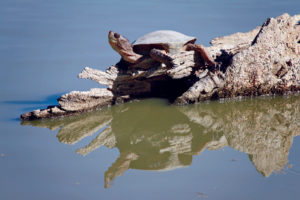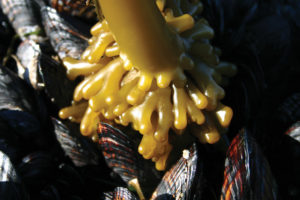So Paul, you would like my comet-ary on the best meteor shower of the year?
During early August earthlings are treated to a spectacular evening display of streaking lights through the starry sky. These heavenly striations light up the summer nights and are commonly called “shooting stars.” But they don’t shoot and they aren’t stars. Correctly called meteors, they are actually small pieces of very old comets.
Comets are fragments of solid matter that did not accrete into the planets or the sun when our solar system formed. Consisting mostly of ice and rock, comets are essentially 4.5-billion-year-old “dirty snowballs.” Most travel in vast elliptical orbits around the sun and may travel halfway to the next nearest star before slowly turning and coming back. These comets pass by the earth about every million years. But some comets, like Halley’s, orbit within our solar system and come around every 200 years or less. The ancient Chinese astronomers were aware of comets and called them “guest stars.”
As these guest stars saunter through the solar system, pieces of them are constantly sloughing off and drifting into space. As the comets circle the sun again and again, always treading the same path, a bunch of comet crud is left floating in large streams. During our journey around the sun, the earth passes through this debris at about the same time every year. The regular passage through this rubble creates our predictable meteor showers.
The comet debris consists mostly of very small particles the size of sand grains or tiny pebbles. The proper name for these coasting celestial tidbits is meteoroids. About 75 to 90 miles above earth, the meteoroids enter our atmosphere and immediately vaporize due to the friction of the air—that’s the “shooting” phase in our misnamed shooting stars. If this occurs during the day we don’t see it, but at night the sky lights up and we call them meteors. Very rarely, large meteors will fall from the sky and not completely burn up but actually hit the earth. When they land, meteors are called meteorites. Got that? Meteoroids to meteors to meteorites. The Barringer Meteor Crater near Winslow, Arizona, is a mile-wide hole where a meteor crashed 25,000 years ago. Closer to home, and thankfully much smaller, a two-inch meteorite struck a Novato house in 2012; scientists determined that it broke from its parent meteoroid some 470 million years ago.
The word meteor comes from the Greek meta, meaning “beyond,” and aeirein, meaning “to raise.” This literally translates to “high in the sky” and originally referred to any atmospheric phenomenon.
This summer, from around August 11 through 14 the earth will pass through the center of debris left by the comet Swift-Tuttle. Called the Perseid meteor shower, this display is the best known and most dramatic of the eight major annual showers. The meteors appear on average one per minute and occasionally at a much faster rate.
To fully appreciate the beauty of this event, view it away from city lights and cloud cover. The show really begins after midnight, so I suggest that you sleep outside. Get yourself firmly ensconced in a warm sleeping bag propped up by pillows and face northeast. For additional comfort have a hot toddy and a friend nearby.
As the earth rotates during the night it turns right into the stream of comet debris. It is similar to riding in a car during a rainstorm—you see more drops on the front of the windshield than on the side windows. Therefore we see more meteors after midnight when the earth is plowing right through them.
While you watch the “falling stars,” draw an imaginary line back to where they appear to start. After several lines you’ll notice they all tend to intersect in the same general area. For our August shower this point is in the constellation Perseus; hence the shower’s name.





